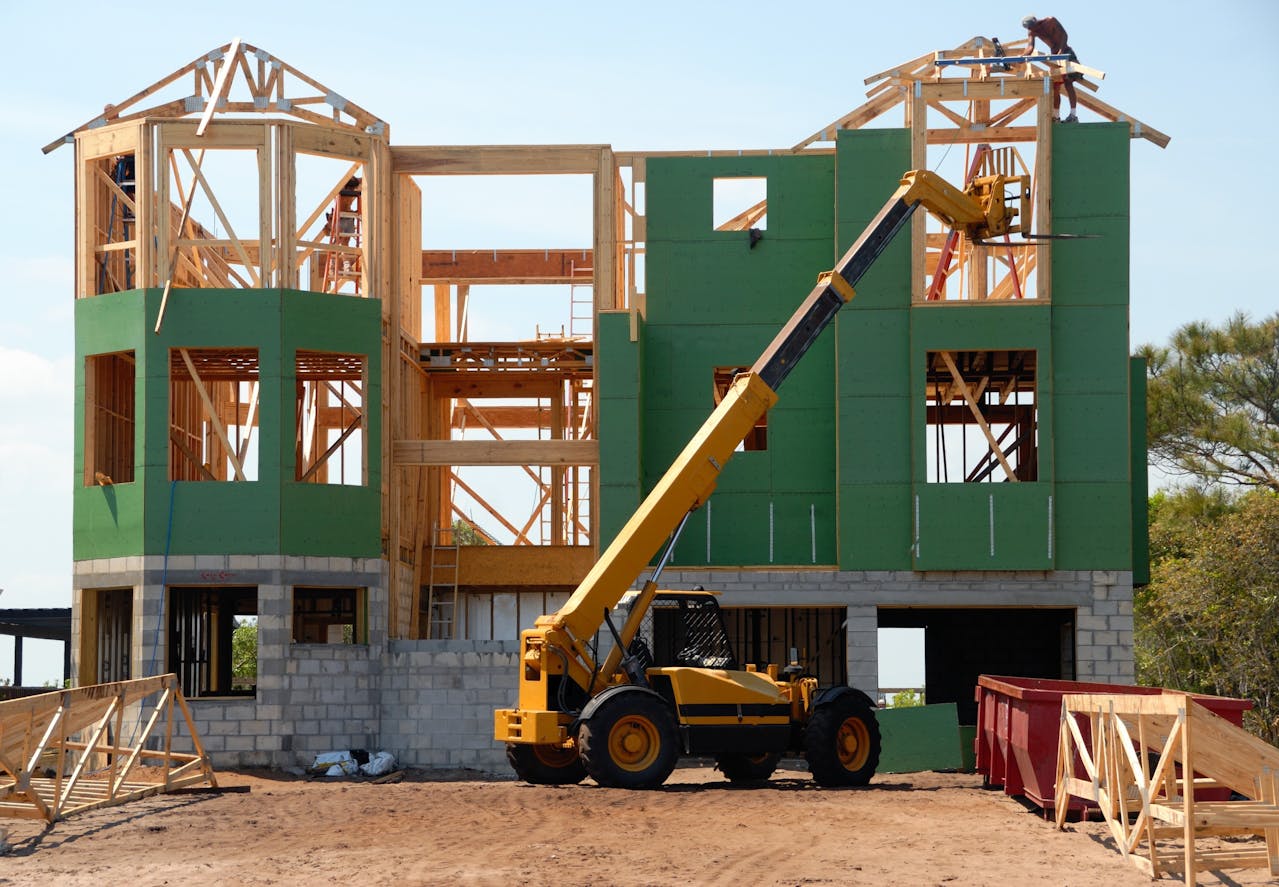The demand for environmentally conscious living is reshaping how homes are built. As climate change, resource scarcity, and rising energy costs affect global priorities, sustainable construction has emerged as both a practical and responsible path forward. For homeowners planning a new build, incorporating sustainable materials into the design isn’t just a trend, it’s a long-term investment in efficiency, health, and the planet.
Modern sustainable materials offer durability, aesthetic versatility, and superior performance compared to conventional options. Choosing these materials helps minimize your home’s carbon footprint, reduce waste, and support healthier indoor environments. More importantly, many of these resources are increasingly cost-competitive, making them accessible even for modest construction budgets.
Wood Done Right
Wood remains one of the most commonly used construction materials worldwide, but not all wood is created equal. Traditional lumber production often contributes to deforestation and ecosystem disruption. That’s why selecting ethically sourced timber is crucial for environmentally friendly homebuilding. Certified wood, typically verified by organizations like the Forest Stewardship Council (FSC), comes from forests managed for regeneration, biodiversity, and minimal environmental impact.
Timber is highly renewable when harvested responsibly. It acts as a carbon sink, storing carbon dioxide for the life of the structure. Engineered wood products, such as cross-laminated timber (CLT) and laminated veneer lumber (LVL), further extend wood’s usability. These advanced materials reduce waste during production and offer excellent strength-to-weight ratios, allowing for more efficient designs and reduced need for steel or concrete.
Timber enhances aesthetic warmth and natural beauty, making it a favorite for both structural and decorative elements. When sealed and maintained properly, wood-based materials can last for decades, making them an ideal foundation for sustainable design.
Recycled Steel
Steel is often viewed as a high-carbon material, but its recyclability makes it a powerful ally in sustainable construction. Recycled steel requires significantly less energy to produce than virgin steel, and it can be reused without loss of quality. This makes it an ideal material for framing, roofing, and structural support.
Using steel can reduce the amount of wood required in a home, preserving forest resources while increasing structural integrity. Pre-engineered steel components are precision-cut, minimizing construction waste on-site. For homes in areas prone to extreme weather, steel offers improved resistance to fire, pests, and moisture damage, contributing to long-term resilience.
Advancements in green steel production, such as using electric arc furnaces powered by renewable energy, are pushing the material’s sustainability profile even further. With careful sourcing and smart design, steel can balance performance with ecological responsibility.
Insulation That Breathes and Protects
Insulation is one of the most crucial components of an energy-efficient home, helping maintain indoor temperatures and reduce reliance on HVAC systems. Traditional insulation materials like fiberglass and foam can off-gas harmful chemicals and are not always recyclable. Fortunately, several sustainable alternatives offer excellent thermal performance with minimal environmental trade-offs.
Sheep’s wool, cellulose (made from recycled paper), and hemp insulation are increasingly popular for eco-conscious builders. These materials are non-toxic, renewable, and biodegradable, while providing natural resistance to mold and pests. Cellulose insulation, in particular, is known for its high recycled content and effective air sealing capabilities.
Another standout is mineral wool, which is made from basalt or recycled slag. It’s highly fire-resistant and doesn’t absorb moisture, making it suitable for high-humidity environments. Whichever sustainable insulation you choose, it should contribute to a tight building envelope that enhances comfort and minimizes energy use throughout the year.
Concrete Alternatives for a Lighter Footprint
Concrete is one of the most widely used materials in the world, and one of the most carbon-intensive. Its production is responsible for nearly 8% of global CO₂ emissions, primarily due to the manufacturing of cement. Fortunately, sustainable alternatives and additives are making it possible to build with concrete while reducing its environmental cost.
Fly ash, a byproduct of coal combustion, and slag, a steel industry byproduct, can replace a portion of the cement in concrete mixes. These substitutes improve strength and durability while cutting emissions. Other low-carbon options include geopolymer concrete and hempcrete, which use different chemical processes to bind aggregates without relying on Portland cement.
Recycled concrete aggregate (RCA) is another smart choice, repurposing demolition waste into new foundations or pathways. By incorporating these materials into your home’s foundation or walls, you can reduce environmental harm while maintaining structural performance.
Natural Flooring With Style and Substance
Flooring plays a major role in your home’s environmental footprint, both in the materials used and the indoor air quality it supports. Sustainable flooring options combine durability, renewability, and low toxicity, ensuring that beauty doesn’t come at the cost of your health or the planet.
Bamboo is a fast-growing grass that can be harvested every three to five years. It’s strong, visually appealing, and available in multiple finishes. When sourced responsibly, bamboo is an excellent renewable alternative to hardwood. Cork flooring, harvested from the bark of cork oak trees without harming the tree, offers natural shock absorption, sound insulation, and resilience against moisture.
Sustainable construction is no longer just for the environmentally conscious, it’s becoming the standard for future-ready homes. Choosing the right materials lays the foundation for a house that’s healthier, more efficient, and built to last. Whether you’re guided by aesthetics, performance, or values, the materials you select can shape your living experience and your environmental impact. With so many innovative and earth-friendly options available, building responsibly has never been more achievable or more rewarding.







Leave a Reply